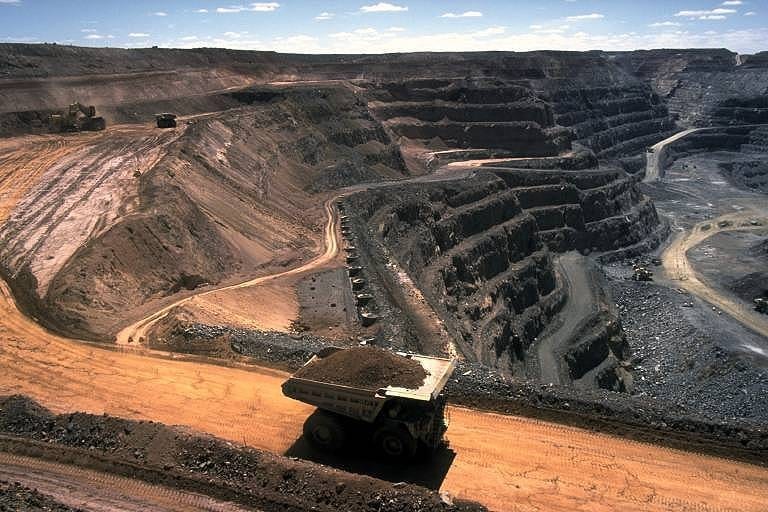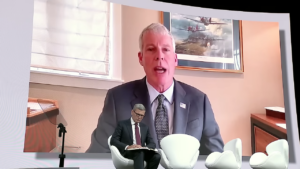The Abbott government has revealed plans to repeal a section of Australia’s environment laws that allows green groups to challenge approvals for mining projects and other large developments in the courts. Federal Attorney-General George Brandis said the government would seek to repeal section 487 (2) of the Environment Protection and Biodiversity Conservation Act and “return to the common law”, after it was used successfully by the Mackay Conservation Group to overturn the federal environment minister’s approval of the Carmichael mega-coal mine in Queensland’s Galilee Basin.
The following is a run-down of the six big lies at the centre of the Coalition’s latest attack on the environment…
It’s the economy versus the environment
Last week Prime Minister Tony Abbott declared that the world only had one planet (true enough) and that we should try to protect it. But he was damned if was going to sacrifice the economy just to save the environment. The Fairfax economics editor Ross Gittins shows the stupidity of this thinking in this analysis today, pointing out that the economy was in fact a wholly owned subsidiary of the environment. Gittins writes that two characteristics of economists stand out when it comes to climate change. First, they accept what the scientists are telling us without argument, and they don’t believe we can go on thinking “the economy” can be kept in a separate box to “the environment”. There are major interactions between the two that can’t be ignored.

The parade of projects
Industry minister Ian Macfarlane was sent out on ABC TV on Tuesday to defend the move to rescind all or part of the EPBC Act (the Abbott government has yet to make up its mind which one it is). “What we’re seeing is project after project held up in very various environmental courts,” Macfarlane told 7.30. “But the alarming thing about the case for Adani is it’s showing that the environmentalists are taking this war against economic development in Australia to a whole new level.” Asked to identify this so-called parade, or even a single example other than the Carmichael decision, Macfarlane was unable to provide one.
Remember, this is legislation introduced by the Howard government. As The Australia Institute points out, third-party appeals to the Federal Court have only affected 0.4 per cent of all projects referred under the legislation. Since the EPBC Act commenced in July 2000, about 5,500 projects have been through the EPBC process and only 33 have been taken to the Federal Court by third parties. Of the 33 actions, four were discontinued or resolved with the consent of the parties and six were ‘legally successful’, in the sense that the applicant received a judgment and/or orders in its favour.
Coal jobs at risk
Abbott and his team continue to use the 10,000 jobs figure for Adani’s Carmichael coal mine. This is despite the fact that the economists retained by the mine developers themselves put the jobs at just 1,642. And as The Australia Institute also noted on Tuesday, the biggest risk to coal mine jobs is the industry itself. Australia’s coal exports have jumped 39 million tonnes since 2013, but job numbers in the industry have fallen 32,000 in that time – the result of “efficiencies” such as autonomous trucks and other technology improvements.
Activists destroying the industry
The Federal Court victory of the Mackay Conservation Group has elicited a number of strong responses from the Coalition, including accusations that “vigilante” green groups were “waging war on economic development” – or, as per Senator George Brandis, “extreme green lawfare.” Abbott has described it as a “sustained campaign of harassment” against plans for a coal mine in Queensland’s Galilee Basin.
But the biggest reason that Carmichael remains stalled is that international banks are walking away from the project, including the two banks poised to collect millions in advisory roles, Standard Chartered and Commonwealth Bank of Australia. As Tim Buckley points out, the project makes no economic sense, simply because the cost of imported coal is now more than that of solar farms, and the thermal coal price has fallen below the point where the cost of extraction, let alone the transport by rail and ship can be recovered.
The cost of emissions reductions
Clive Hamilton today neatly summarises how Greg Hunt’s environment department conjured up the $600 billion “economic cost” of pursuing higher emission reduction targets, as recommended by the Climate Change Authority. Hamilton, a board member of the CCA, describes the estimate as “one of the most egregious beat-ups you’ll ever read.” Hamilton said the CCA modelling misrepresented by Hunt showed you would need a magnifying glass to compare the economic cost of strong action compared to no action, let alone the weak action proposed by the Abbott government.
The sheer hypocrisy of it all
It’s not as though the corporate world doesn’t take advantage of the court systems for its own purposes. Monsanto has a veritable armada of lawyers to protect its patents for genetically modified crops. But while Abbott is trying to remove the right of environmental groups to object to coal projects, his government has created a new mechanism for anyone to protest against wind projects, including the creation of a “wind farm commissioner” and proposals to tighten laws. Abbott has made it clear he doesn’t like wind farms, a declaration that prompted the co-developer of Australia’s biggest wind farm to date, New Zealand energy giant Meridian Energy, to declare that it is no longer worth pursuing wind farm projects in Australia.










